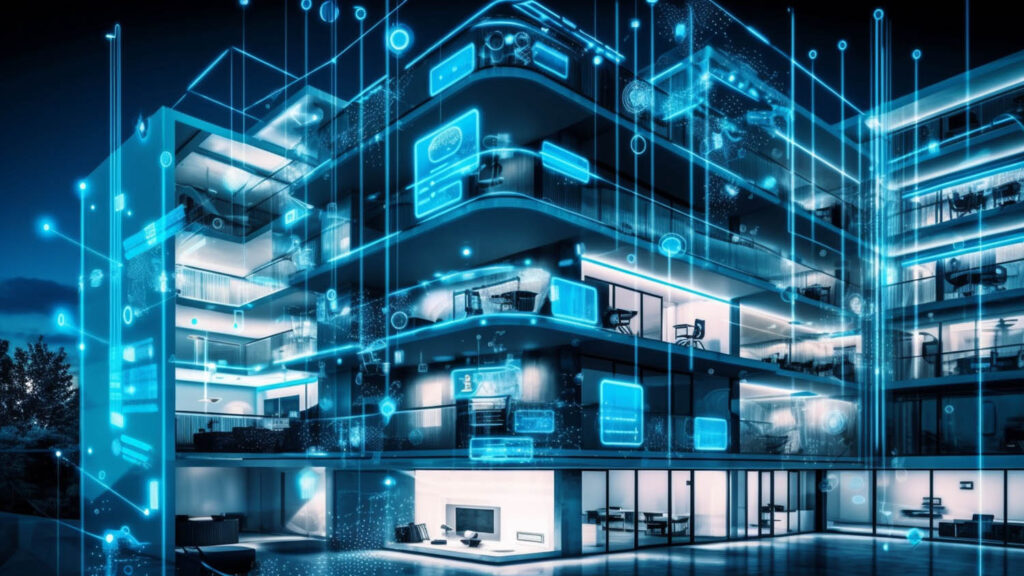Dr. Shrikant B. Sharma, founder+CEO of SmartViz, delves into the inherent inefficiencies of buildings, examines the stark reality behind their lacklustre performance, and the challenges and insights into how we can revolutionise the building industry and make buildings truly smart
Let’s face it: smart buildings aren’t really so smart after all. Ok, so they may have the latest technologies, latest Building Management Systems, sensors. LED lights, smart controls, intelligent elevators, and so on.
Yet these buildings are dumb. They don’t know how many occupants are present. Or where they are. So they continue to heat and cool the floors and rooms even when they are empty or half empty. The sensors and BMS may turn the lights on and off, but doesn’t regulate CO2 to suit the occupancy, or smartly position the elevators to suit the movements in peak times, or simply track energy against occupancy to reduce carbon emission.
The data collected by these ‘smart’ systems is often inaccessible. The supposedly ‘intelligent’ components are often vendor-locked and not interconnected. Their actions are hardly transparent, so you never know if they are working right, or working at all! See if you can even get these intelligent systems to actually talk to each other. You can’t.
The hard truth is, most smart buildings are neither so intelligent, nor data driven, and definitely not people centred!
The misguided perception of smart buildings
Smart buildings, in theory, hold immense potential to optimise energy consumption, enhance user experience, and streamline operations. However, in practice, they often fail to deliver on these promises.
Ignoring the human element: one of the primary reasons why smart buildings fall short is their failure to prioritise the human element. Buildings should be designed and operated with the occupants’ comfort, productivity, and wellbeing in mind. Yet, many smart buildings focus solely on automation and data-driven processes without considering the impact on the people within those spaces. This oversight results in suboptimal environments and an overall disconnect between the building and its occupants.
The result? Sick building syndrome, poor productivity, and increased absenteeism in the workplace, compromised health and wellbeing at homes, poor learning environment in schools, colleges and universities.

Siloed systems and data overload: another significant hurdle faced by smart buildings is the existence of siloed systems and the challenge of effectively utilising the wealth of data available. Data overload further compounds this issue, making it difficult to extract actionable insights and implement meaningful changes.
Transforming dumb buildings into intelligent spaces
Transforming the landscape of smart buildings involves transcending the mere deployment of technology. It necessitates a paradigm shift toward creating structures that seamlessly integrate technology with human experiences.
Where BIM, BMS and BEMS have failed to deliver the promise of improved building performance, IoT, digital twins and AI are paving the way for true building intelligence. Simple, low cost, peel-and-stick sensors, integrated with simple, intuitive digital twins and real-time building analytics can revolutionise the concept of smart buildings by addressing these inherent limitations.
What will it take for these technologies to make buildings truly smart?
Disrupting the industry: building blocks of truly smart buildings
The fundamental building blocks we need to deliver a truly smart building:
- IoT for connected intelligence. Simple, low-cost sensors can be easily retrofitted into any buildings, with an adjustable level of granularity.
- Cloud platform as a single source of truth. Cloud technology has matured a long way and provides a robust solution to aggregate, process and integrate data using a range of data storage, analytics and security services.
- Digital Twin as a smart building platform. Digital twins are a virtual replica of the building – however they’re much more than the 3D representations. They are living, breathing model of the building – streaming data from sensors, regulating controls in real time, optimising building performance. They also provide insights into what parts of the buildings are used well vs unused, which parts are performing well vs poorly, and where substantial savings can be achieved. Moreover, they will also allow you to scenario plan and optimise the building elements to save costs and improve user experience.
- AI. AI is becoming increasingly accessible as a technology. It can detect trends from the live and historic data. It can predict future performance. It can trigger alerts. It can warn you in advance and regulate systems based on future weather and events.
While building an effective platform there are some fundamental considerations as follows:
- Keep it simple. In fact, simpler the better. This applies to all components – IoT devices, data storage, visualisations… everything!
- Make it accessible. Similar to above. Most smart building systems fail to deliver because they are too complex, needing deep technical skills, rendering them unusable.
- Keep it open. Open platforms allow easy extendibility e.g. using flexible and dynamic dashboards for further processing insights.
- Insight, not data. Data is the new oil – but like the old oil it needs processing and refining to turn into value. Therefore focus on insights.
The power of human-centric design
At the core of truly smart building is the recognition that buildings should adapt to the needs and preferences of their occupants. By leveraging real-time data and AI-driven insights, you can optimise environmental conditions, such as lighting, temperature, and air quality, to create spaces that enhance comfort, productivity, and overall wellbeing. This human-centric design approach ensures that smart buildings become truly intelligent and responsive to the people they serve.
The road ahead
The current state of smart buildings often leaves much to be desired, with their limited intelligence and disconnected systems. However, the future holds immense potential for transforming these buildings into intelligent, sustainable, and user-centric spaces. IoT, AI and digital twins lead the charge in this transformation, empowering buildings to break free from their limitations and unlock their true potential.







